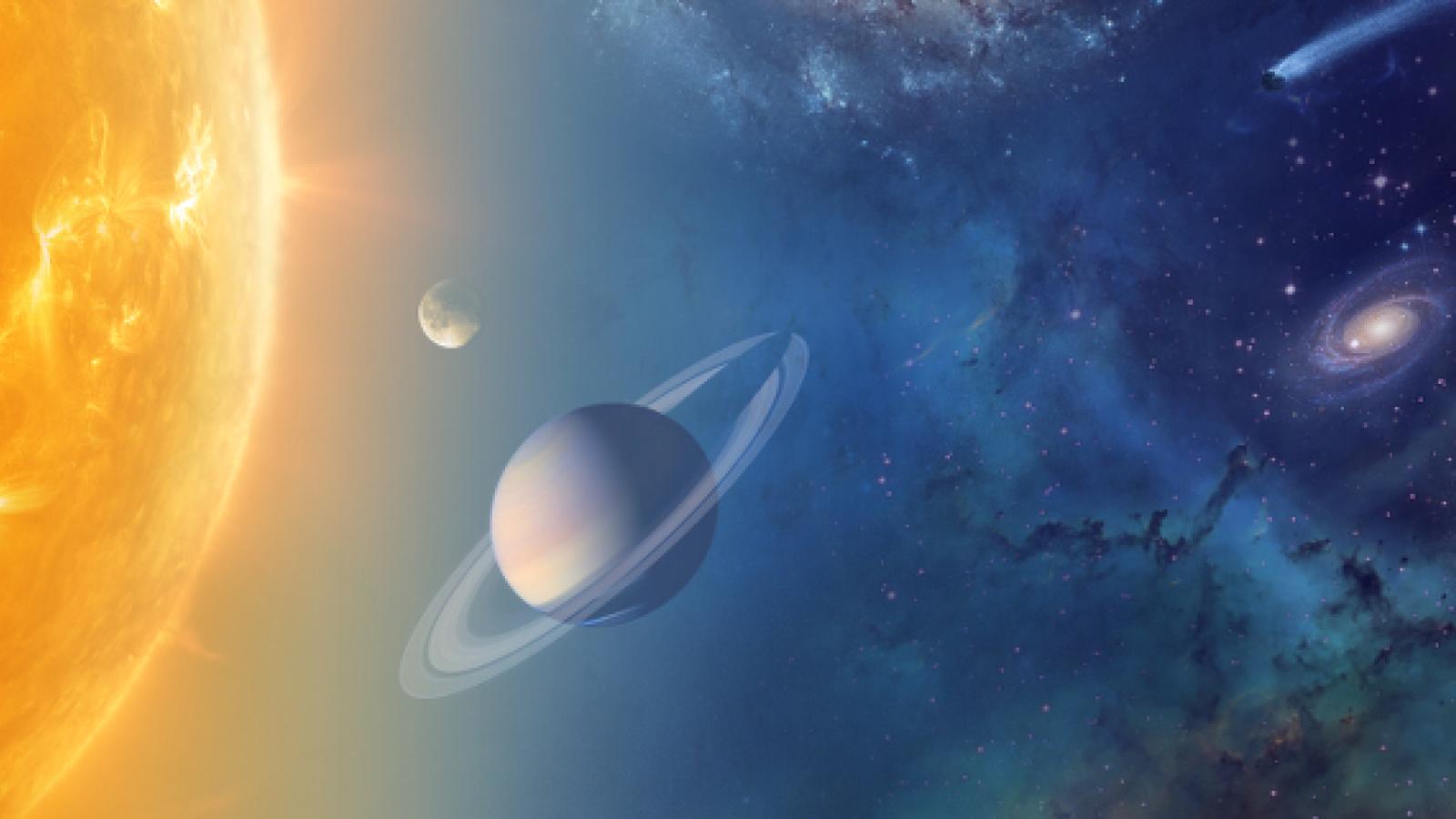What is the architecture of our Solar System?
What are stars? How do they form, evolve, and die?
What is a galaxy?
What is the Big Bang?
What are Dark Matter & Dark Energy?
Astronomy 1101, From Planets to the Cosmos, is an overview of astronomy from our solar system to the universe as a whole. It is a General Education (GE) Physical Science course in the Natural Science category. The goals of courses in this category are for students to understand the principles, theories, and methods of modern science, the relationship between science and technology, the implications of scientific discoveries, and the potential of science and technology to address problems of the contemporary world.
Course Objectives
By the end of this course, students should successfully be able to:
- Understand the basic facts, principles, theories, and methods of modern science.
- Understand key events in the development of science and recognize that science is an evolving body of knowledge.
- Describe the interdependence of scientific and technological developments.
- Recognize the social and philosophical implications of scientific discoveries and understand the potential of science and technology to address problems of the contemporary world.
Astronomy 1101 will meet these expected outcomes by covering three interconnected themes:
- The Long Copernican Revolution
The nature of our solar system; planetary systems around other stars; the physics of gravity. - The Lives of Stars
The nature and evolution of stars; the origin of the elements; the physics of light. - The Cosmos
The nature and evolution of galaxies; evidence for the Big Bang; the structure of the universe on its largest scales.
This course attempts to convey a number of the facts that astronomers and astrophysicists have learned about these topics, to describe the outstanding scientific problems that are the focus of current research, to illustrate ways in which physical principles are used to understand the universe, and to show how scientific theories are developed and tested against observations.
Among the questions that you should be able to answer by the end of the course are the following:
- What is the architecture of our solar system, and how do we find other planetary systems?
- What is a star? How do stars form and evolve?
- What is a galaxy? How do galaxies form and evolve?
- What is the evidence for dark matter and dark energy?
- What is the Big Bang?
- What evidence supports or challenges our explanations for the physical nature of stars, galaxies, and the cosmos?
Course Organization
This is a 4 credit hour course; each week, there will be 3 hours of lecture and one two-hour laboratory session. For Arts and Sciences students in a Bachelor of Arts program, this course meets the Arts and Sciences GE requirement of a natural sciences course that includes a laboratory component.
Course Catalog Description
Overview of the Copernican revolution, the discovery of the nature of our solar system, light, gravity, and planets around other stars; the nature and evolution of stars and origin of the chemical elements; the history of galaxies and the expanding universe. Weekly laboratory. Not recommended for students who plan to major in astronomy or physics.
Prerequisites:
Math 1050 (075) or 102, or an ACT math subscore of 22 or higher that is less than two years old, or Math Placement R or higher; or permission of instructor. Not open to students with credit for 1140, 1144, 1161H (H161), 1162H (H162), 2161H, 2162H, 2291 (291), or 2292 (292).
GEL Natural Science: Physical Science course with lab.
GEN Natural Science course.
This 4-unit course has a required 1-unit lab section that all students must enroll in.

